Feeder Fishing on Rivers - Amer Jawad
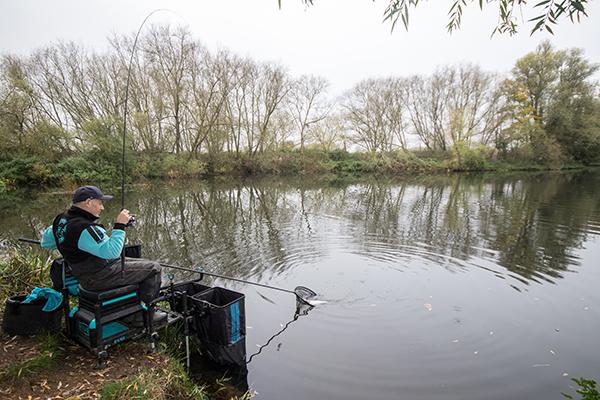
On occasions, you might find that a weir pool peg had been included in a river event that you had entered, and if the luck of the draw saw you picked that peg number out, the difference between getting the best out of it, or completely wasting a day on the bank could be settled even before you cast a bait into the water.
Watercraft is the key ingredient, and to discover the ins and outs of where to fish and why, we joined Rive's Amer Jawad on a visit to the weir pool at Brampton Mill on the River Great Ouse in Cambridgeshire, as he looked to target bream from the deep-water pool.
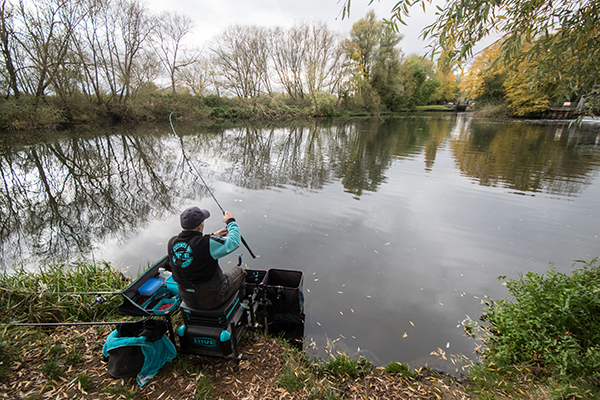
“As weir pools go, there's a large body of water to fish, but don't be fooled that you can cast anywhere and catch, as there are hidden dangers everywhere,” Amer cautioned, as he clipped a bomb onto his feeder link.
“I have fished here before, and I know that there's a sunken tree just to my right about two rod-lengths out. That's permanent, but the rest of the pool changes every year, depending on the amount of water that comes over the twin weirs, upstream to my right.
“Like most weir pools, the water is very deep where the fast water churns up the riverbed just below the weirs, but then you get a gradual slope at its tail, before the river returns to it's normal depth. “Those are the easy parts to read. However, when the water is raging over the weirs, it creates massive vortex where all sorts of rubbish – large and small, can be picked up and deposited away from the main flow.
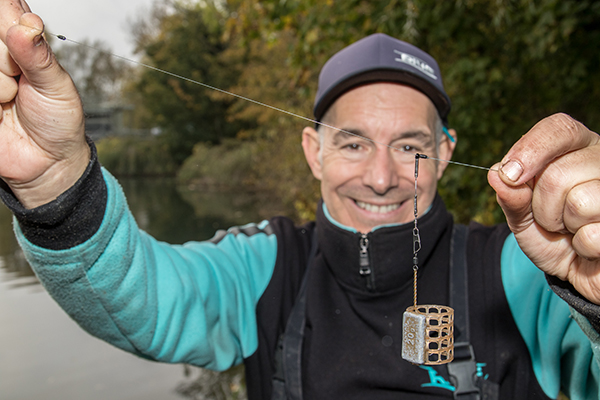
“At first glance the pool in front of me offers a number of enticing lines to fish, but before I settle on my best option, 10 to 15 minutes of casting a bomb around might change my mind, and ultimately time and tackle.”
Starting to his left, with a 15g bomb clipped on, Amer explored the pool by casting both short and long. He allowed the weight to settle and then slowly retrieved it – looking for snags and feeling the type of bottom that the lead dragged across.
Most of the water in front was clear of rubbish and he settled on a longer chuck (38 metres and eight to 10 feet of depth) onto a hard gravel slope and 25 metres, just shy of the main boat channel, which he guestimated to be around 25 feet deep, by counting down his bomb.
“I've picked two areas that came up clean. Both are slightly to my right and having seen a few fish roll in that area when I arrived, it's an added incentive to fish those. The bay to my right between me and the first weir is full of snags, so I quickly dismissed that after a few casts.
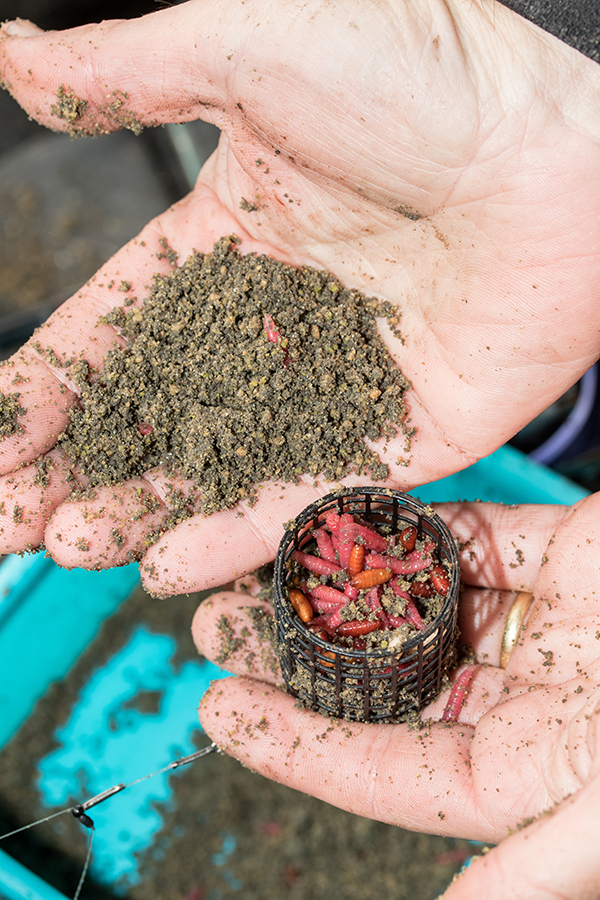
“I fancy the gravel slope for a few chub and bream, and the deep water for bream. It's dull at the moment, but this water is clear, so if it brightens up, the latter might be my best option, as the session progresses.”
Amer had two identical 10-foot feeder setups ready to go. He had 0.10mm braid on the reels with 6lb Daiwa ST mono shock leaders. A 20g Drennan Grip Mesh feeder was set on a running Dean Barlow feeder link, between two feeder stops – the bottom one resting on a twizzled loop that would hold the hook link.
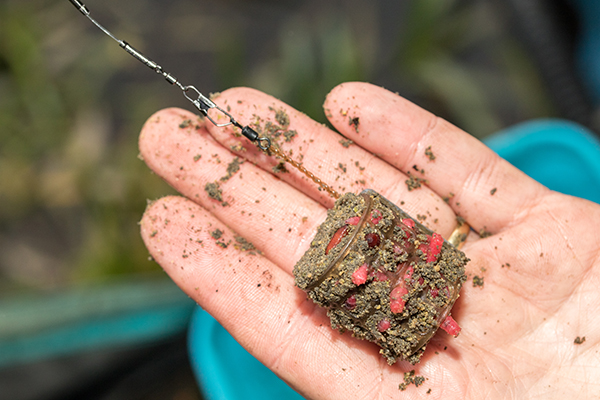
The hook length was 30 inches of Rive Hardline on the short chuck rod and 36 inches on the 38m setup. Hook on both was a size 14 Guru Feeder Special. Both were clipped up and Amer had identified two far bank markers for accuracy.
The groundbait recipe for the session was 70 per cent Sonubaits F1 Dark and 30 per cent Method Match Dark, which created a heavy, rich fishmeal mix that Amer prepared prior to his visit to allow the mix to become less active.
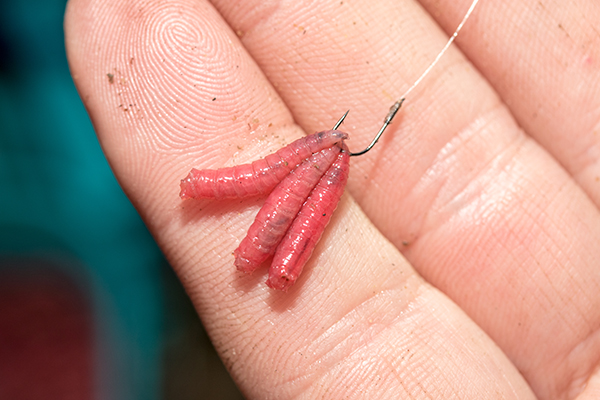
On the side tray, he had dead red maggots to add the feed, and as hook bait, plus casters for the feed, and small worms as a hook bait alternative.
To get the ball rolling Amer fed three large bait-up feeders to the 38m mark and four on the shorter line, and once he hit the clip, he allow the tension in the line to guide the feed down in an arc to ensure the groundbait and freebies landed in a tight area.
With three dead reds loaded, Amer started long. He recast regularly, and after 20 minutes, he had his first fish, a small skimmer. That was followed by two more, and then it went quiet. The next five casts failed to get a bite, so he picked up the short line rod.
“I expected a few more bites once those skimmers turned up, or even the odd roach. It's brightened up a little, so maybe they've moved deeper.”
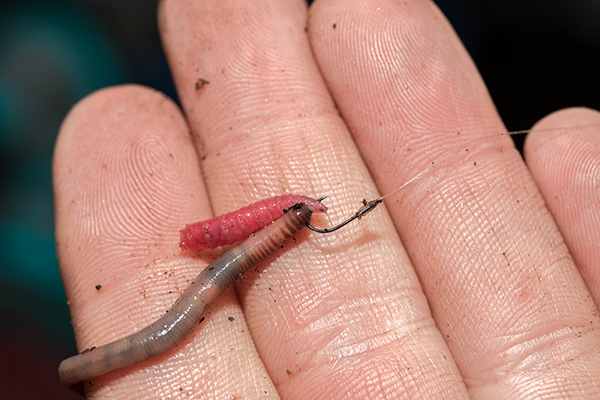
It's seemed the answer was that they had, as the after three biteless casts, Amer's tip bend round, as it indicated a big 'liner'. Then after a 'tap tap' on the tip he lifted into a good size skimmer. “That's what I'm looking for. It's about 1lb 8oz, but it felt much bigger, as it fought in the deep water. It's true that river bream fight harder than its stillwater brothers.”
That fish signalled a run for fish to 2lb, but as the session progressed, Amer started to get knocks and liners that resulted in false bites.
“I'm still catching, but it's difficult to work out what is a real bite to a false one. I think the problem is there are a lot of fish down there, which is good, but they have wafted the freebies around, and I think that that has forced the skimmers to graze a wider area. That's why I'm getting so many liners. “I'm going to cut back on the amount of dead reds I put in the feeder to see it that will reduce the liners, as I think that they are being disturbed more than the casters.”
The change worked. It definitely reduced the false bites, but the wait time for a bite became longer. The positive gain was that the skimmers were quality fish.

After a good run of fish to 3lb, the action slowed. Amer had added more casters and kept the dead reds to a minimum, which had reduced the false bites, but it seemed that the skimmers had backed off, as he saw little indication on his tip.
“I think the fish have moved up in the water and are not seeing the hook bait as it drops. It might be too quick, so I'm going to fish a longer hook link to see it that makes a difference. Having caught well, they may have backed off, so seeing a slower falling bait might tempt them to follow it back down.”
It did, and although the bites were still slow to come, again it was quality skimmers. “I know that there are plenty of fish there, and although I'm getting bites on three dead red maggots, it’s not quick enough.
“Let be honest, in a match you want to get fish quickly if they are there, so it no use just sticking it out and hoping things will improve. I'm going to try a small worm, plus a dead red, as always react to a red bait. However, I think the movement of a worm is what might be missing to get their attention more quickly.”
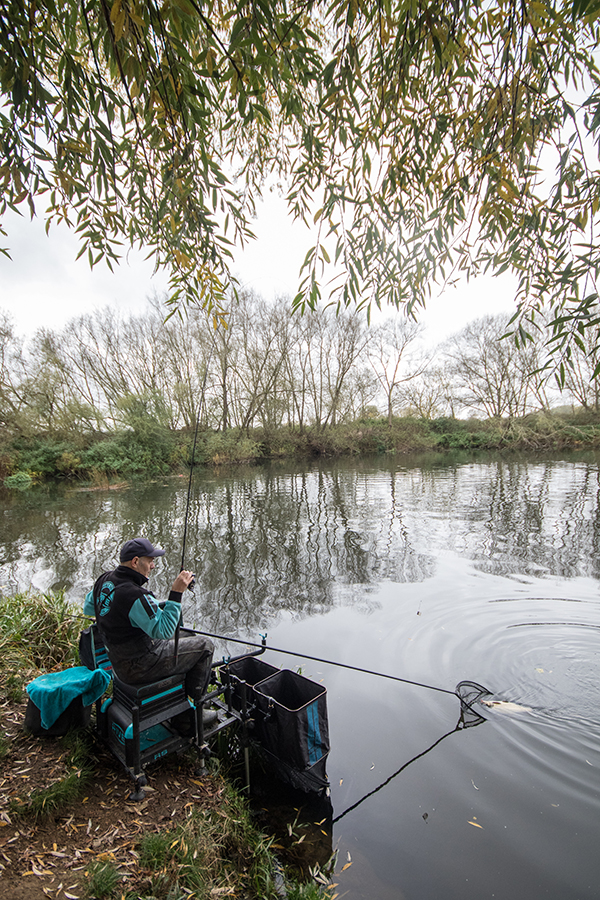
Amer also upped the number of dead reds in his feeder, and although mindful that the 'liners' could increase, they did seem to attract the fish more earlier in the session, but a risk worth taking if it drew the fish back down.
The reaction was instant, as a big skimmer hit the worm before the feeder had time to settle. What followed was the best action of the day, and yes, the false bites increased, but they were easy to distinguish from true bites, as a liner slowly pulled the line, whereas a bite continued to be a 'tap tap' on the tip.
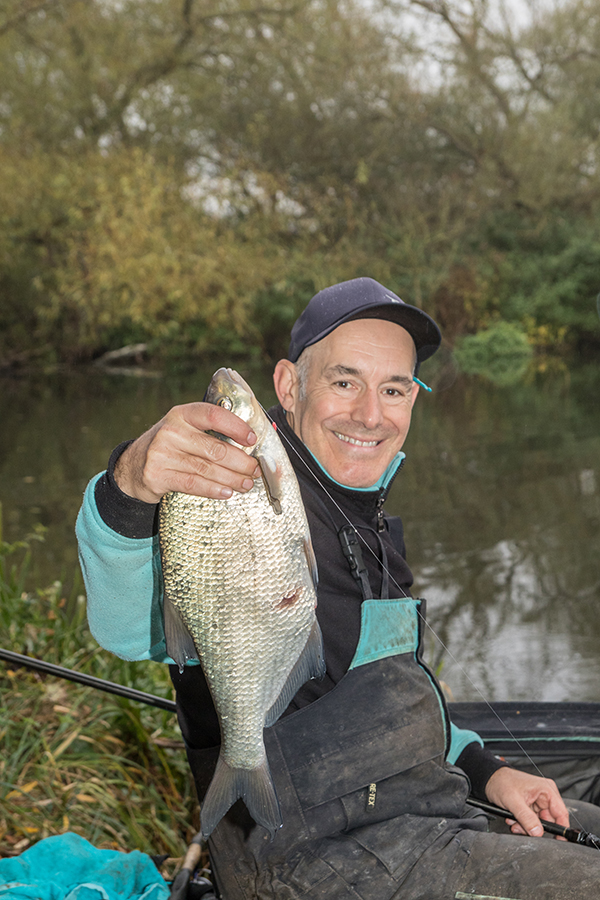
“What a difference! It has to be the movement of the worm that's done the trick. I'm only just getting the braid to sink and a little tension on the tip before bites come. It's a big contrast to earlier. I've even had a big slab, which must be 5lb, or so.”
The bites slowed again towards the back end of the session, and so Amer switched back to three dead reds. The bites improved, but the skimmers were small, compared to those already in the net. Time to call it a day!
“I never expect to catch this well,” Amer concluded. “It's been a real 'red letter day', but I've had to make a few decisions on the fly to get the best out of the pool. I must admit that I was expecting more from the long chuck, but after 30 minutes, it didn't feel right.
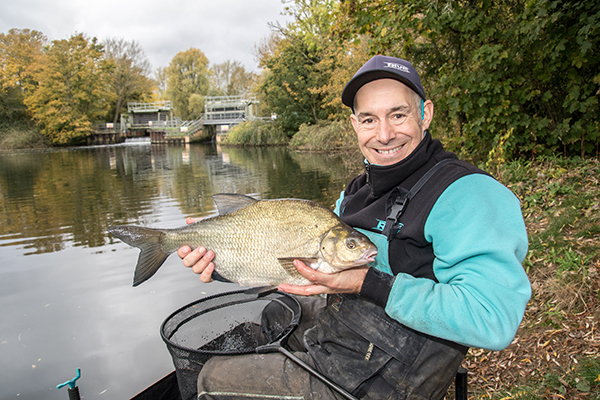
“Looking at the fish that I caught during the day, it feels like there where small shoals of different sizes, as at first, they were around 1lb, then the bigger fish turned up and finally those palm-size skimmers.
“If there was one decision that I probably should have made earlier, it would have been the switch to worm. The bigger fish, especially, reacted to the active hook bait, so something for the memory banks.
“The river feeding the pool is quite low considering the time of year, so the lack of pace in the water allowed me to fish the deeper line.
“On another day it could be a completely different looking venue, but whatever it looked like, my first priority would always be to find the right depth and clear bottom where I could fish confidently without worrying about rubbish being washed through my rig.”
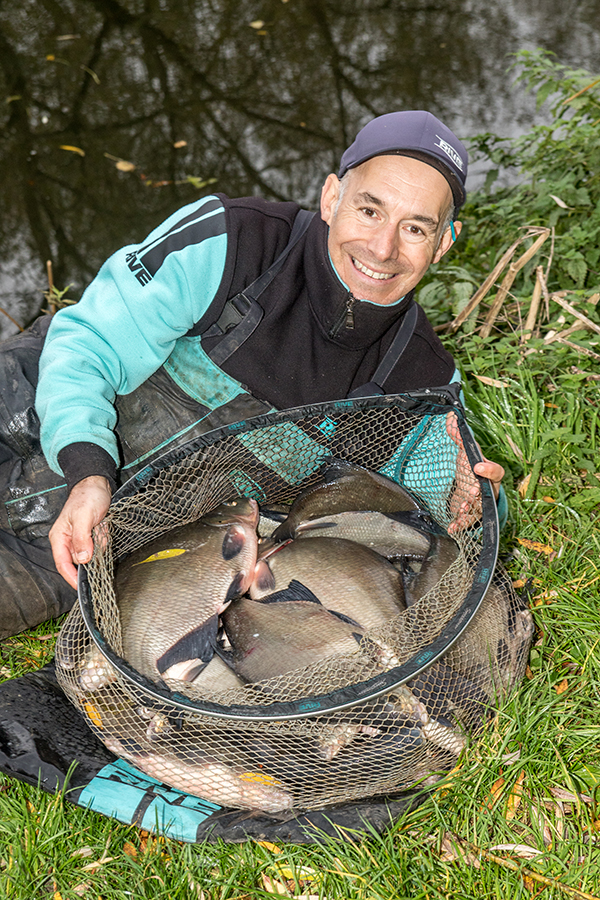
- Log in or register to post comments













